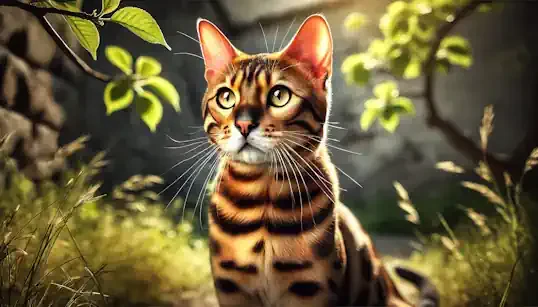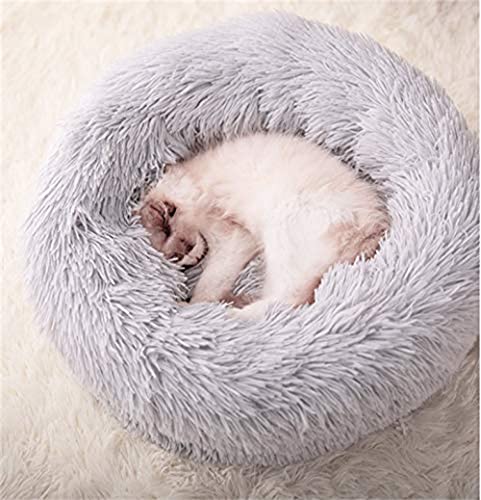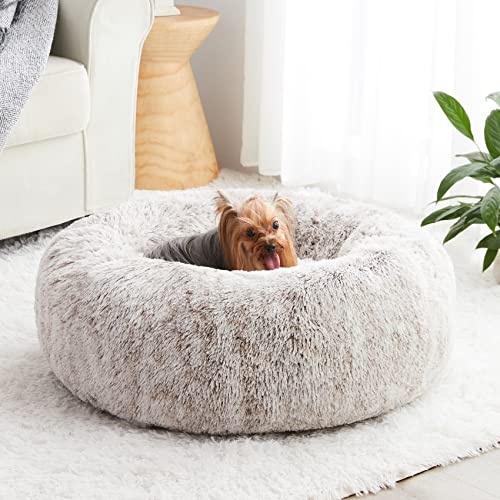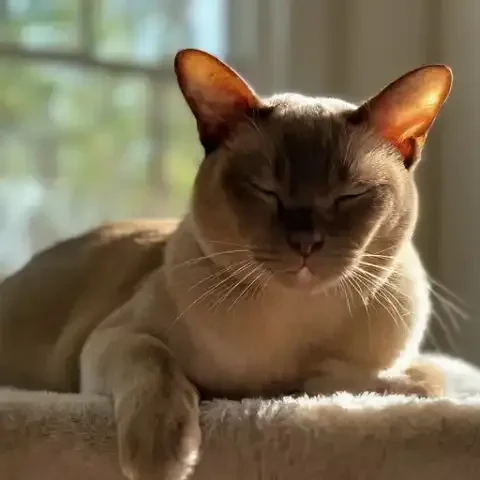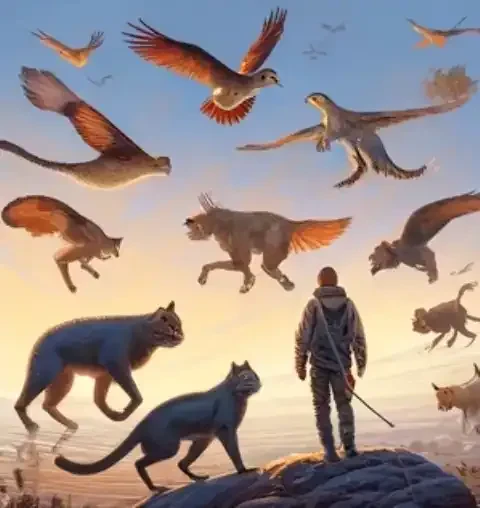Want a touch of the jungle in your living room, without the roaring and, perhaps more importantly, the raw meat? Imagine a creature of captivating beauty, mirroring the exotic patterns of the wild, yet purring contentedly on your lap, seeking cuddles and playtime. Meet the Bengal cat, a breed that masterfully bridges the divide between the untamed allure of the jungle and the loving companionship of a domestic feline. They are nature's artistry brought indoors, a living embodiment of the wild cat aesthetic, tamed and tailored for the home, yet retaining a spark of the untamed that makes them truly unique. Imagine a cat with the mesmerizing spots of a leopard, or the swirling, intricate patterns of a marble cat, but with the playful spirit and affectionate heart of a beloved housecat. This isn't the stuff of fantasy novels; it's the enchanting reality of the Bengal cat – a breed quite unlike any other, a feline phenomenon that has captivated cat lovers worldwide with their striking looks and engaging personalities.
This article is your comprehensive guide to the extraordinary world of Bengal cats. We will embark on an exciting exploration of everything you need to know about these spotted wonders, from the secrets behind their mesmerizingly wild appearance to the depths of their energetic and intelligent personalities. We will delve into their fascinating history, a tale of intentional creation and a quest to bring the beauty of the wild into our homes. We will unravel the specifics of their care requirements, ensuring you are fully prepared to meet the needs of this exceptional breed, and ultimately, we will help you determine if the Bengal cat, with all its exotic allure and spirited charm, is indeed the right feline companion to enrich your life and home. Prepare to be captivated, informed, and perhaps even inspired to unleash a little bit of your inner wild side, with a Bengal cat as your guide.
A Walk on the Wild Side: Decoding the Bengal's Exotic Appearance
The Bengal cat's visual appeal is undeniable, a head-turning spectacle that immediately evokes the exotic beauty of wild felines. This captivating appearance is no accident; it is deeply rooted in their deliberate lineage, a carefully crafted blend of the domestic and the untamed. At the heart of the Bengal's allure lies their direct connection to the Asian Leopard Cat (ALC), a small, wild feline species native to parts of Asia. This wild ancestry is not just a historical footnote; it is the very foundation of the Bengal breed's striking aesthetic, the source of their captivating spots, their athletic grace, and their undeniable "wild cat" look. It is crucial to emphasize, however, that despite this ALC heritage, Bengals are unequivocally domestic cats. Generations of selective breeding have successfully tempered the wilder instincts of their ancestors, resulting in a feline companion that is tame, loving, and well-suited to life within a human household. The early breeders' primary goal was precisely this: to create a domestic cat that possessed the visual splendor of a wild cat, specifically the Asian Leopard Cat, but with the gentle and adaptable temperament of a domestic feline companion. They sought to capture the essence of the wild, its visual magnetism and raw beauty, without sacrificing the affectionate and manageable nature that makes cats such beloved pets.
The most immediately recognizable feature of the Bengal, and the one that most directly links them to their wild ancestry, is their breathtakingly patterned coat. Bengals boast two primary coat patterns: the dramatically Spotted and the intricately Marbled, each offering a unique and stunning expression of nature's artistry. Spotted Bengals, perhaps the more iconic of the two patterns, are designed to mimic the spotted coats of wild cats like leopards and jaguars. The spots are not simply randomly scattered; breed standards favor distinct, well-defined spots that are randomly yet horizontally aligned along the body, creating a visually appealing flow. Within the spotted pattern, further variations are admired, including "rosetted" spots, which feature a two-toned circular marking resembling a rose, "arrowhead" spots, with their distinctive pointed shape, and "paw print" spots, reminiscent of tiny paw prints scattered across their fur. A key aspect of the spotted pattern is the clear contrast between the spots and the base coat color, ensuring each spot stands out sharply, enhancing the overall visual impact. Ideally, spots should also exhibit "ticking," meaning each individual hair within the spot has multiple bands of color, adding further depth and richness to the markings.
Marbled Bengals, the second primary pattern, offer a different yet equally captivating expression of wild beauty. Instead of distinct spots, marbled Bengals display swirling, random, and flowing patterns that resemble the marbling seen in marble stone, or the abstract patterns of a wild cat's coat. Breed standards prefer a horizontal flow to the marbled pattern, enhancing the natural lines of the cat's body and creating a sense of dynamic movement within the fur itself. Like spotted Bengals, marbled Bengals boast bold patterns with high contrast between the markings and the base coat, ensuring visual impact and showcasing the intricate details of their unique pelage. Both spotted and marbled patterns are naturally occurring genetic expressions, making each Bengal truly unique. No two Bengals will ever have exactly the same spot or marble pattern, adding to their individual charm and making each cat a one-of-a-kind work of art. These patterns, whether the bold and distinct spots or the flowing and intricate marbling, are fundamental to the Bengal's "wild cat" aesthetic, transporting us, in our imaginations, to the exotic landscapes where their wild ancestors roamed.
The color palette of the Bengal cat further enhances their wild and exotic appearance, drawing inspiration directly from the natural world. While various colors are recognized, certain hues are particularly associated with the breed and contribute significantly to their overall "wild cat" image. Brown (or Black) Spotted or Marbled Bengals are perhaps the most classic and instantly recognizable, perfectly embodying the look of leopards and other wild cats. These Bengals feature a ground color ranging from warm brown to tawny gold, beautifully contrasted by black or dark brown spots or marbling, creating a visually striking and timeless "wild cat" aesthetic. Snow Spotted or Marbled Bengals offer a lighter and more ethereal interpretation of the wild look. Encompassing variations like Seal Lynx Point, Seal Mink, and Seal Sepia, snow Bengals exhibit a ground color ranging from ivory to creamy white, exquisitely contrasted by markings ranging from seal brown to near black. The "snow" colors are a result of Siamese, Burmese, and Tonkinese genetics introduced into the Bengal lineage, adding another layer of genetic complexity and visual variation to the breed.
Silver Spotted or Marbled Bengals present a strikingly modern and icy interpretation of the wild aesthetic. These Bengals boast a ground color ranging from pure silver to pale grey, sharply contrasted by black or dark grey markings. The silver base coat intensifies the contrast and creates a luminous quality, enhancing the wild and almost ethereal look. While Brown, Snow, and Silver are the most commonly recognized and sought-after colors, Bengal cats can also come in other, less frequently seen hues, adding further variety to the breed. Charcoal Bengals, for example, possess a dark overlay to their base coat, creating a smoky, mysterious appearance. Blue Bengals exhibit a softer, more muted palette with bluish-grey tones, and Melanistic Bengals are almost entirely black, offering a sleek and panther-like solid color variation. Each of these colors, from the classic browns to the icy silvers and beyond, serves to enhance the Bengal's wild appearance and offers a wide spectrum of visual variety within the breed, ensuring that there is a Bengal to captivate every admirer of feline beauty.
Beyond pattern and color, the coat texture and the presence of "glitter" elevate the Bengal's coat from merely beautiful to truly extraordinary. The Bengal coat is typically short to medium in length, lying close to the body, contributing to their streamlined and athletic silhouette. The texture is described as dense, luxurious, and incredibly soft to the touch, a tactile delight that belies their "wild cat" appearance. Running your hand across a Bengal's coat is a sensory experience, a feel of plushness and silkiness that is both unexpected and utterly captivating. Adding to this luxurious texture is the unique "glitter" gene, a distinctive trait of the Bengal breed that causes an iridescent sheen to shimmer across their coat, particularly when caught in sunlight. This "glitter" is not actual glitter particles, but rather an optical effect created by the hair structure itself, scattering light in a way that resembles sprinkled gold dust or a coating of pearlescent shimmer. This natural "glitter" is a highly desirable and distinctive trait of Bengals, enhancing their wild allure and adding a touch of magical sparkle to their already breathtaking appearance.
Beneath the striking coat lies a body structure that is equally impressive, reflecting the athleticism and power of their wild cat ancestry. Egyptian Maus are medium to large sized cats, possessing a muscular and athletic build that speaks of inherent strength and agility. They are not delicate or dainty felines; they are robust and well-muscled, with a palpable sense of power beneath their sleek coats. Their physique is long, lithe, and well-proportioned, avoiding both the cobby, compact build of some breeds and the overly slender, delicate frame of others. They strike a perfect balance between strength and agility, showcasing a feline form that is both powerful and graceful. Their movements are fluid and agile, mirroring their athletic build. They leap, climb, and pounce with effortless grace, showcasing their inherent athleticism in every action. This agile nature is not just for show; it is a reflection of their natural hunting instincts and their wild cat heritage, a testament to their physical prowess and inherent agility. Their legs are strong and well-muscled, supporting their athletic movements and powerful jumps. Their musculature is well-defined, giving them a toned and athletic appearance that further enhances their "wild cat" image.
The head and facial features of the Bengal cat are equally striking, contributing to their overall wild and alert expression. Their head is described as a modified wedge shape, with gently rounded contours, creating a balanced and harmonious facial structure. It is neither sharply angular nor overly round, but rather a pleasing middle ground that frames their expressive features. Their eyes are perhaps the most captivating facial feature, almond-shaped and intensely expressive, radiating intelligence and alertness. Bengal eyes come in a wide range of colors, including gold, green, copper, aqua, and blue (particularly in snow Bengals), each hue adding to their individual charm. Regardless of color, their eyes are known for their bright, luminous quality, enhancing their alert and engaging gaze. Their ears are medium-sized, wide at the base and rounded at the tips, set to follow the lines of the wedge-shaped head. Their ear placement contributes to their alert and attentive expression, always seemingly listening and observing their surroundings.
Their muzzle is strong and well-defined, with high cheekbones that add definition to their facial structure and contribute to their overall sculpted appearance. Their profile is relatively straight, enhancing their wild and alert expression, conveying a sense of intelligence and keen awareness. Adding to their distinctive facial markings are the black "mascara" lines that trace along their eyes, accentuating their expressive gaze and further enhancing their "wild cat" look. Other facial markings, such as tabby "M" markings on the forehead and stripes or spots around the face, further contribute to their exotic and striking appearance. Completing their wild aesthetic is their tail, medium in length, thick at the base, and tapering gracefully to a black tip. It is carried low, in proportion to their body, contributing to their balanced silhouette and streamlined appearance. The tail itself may also be adorned with spots or marbling, mirroring the patterns on their body and further unifying their overall “wild cat” aesthetic. In every detail of their physical presence, the Bengal cat is a masterpiece of feline design, a "walk on the wild side" brought beautifully and safely into the domestic realm.
More Than Just a Pretty Face: Exploring the Bengal Personality and Temperament
The Bengal cat’s allure extends far beyond their breathtaking appearance; it is profoundly enhanced by their dynamic, intelligent, and deeply engaging personality. They are not simply ornamental beauties to be admired from afar; they are highly interactive, intelligent companions with a zest for life that is both captivating and, for the unprepared owner, occasionally challenging. Bengal cats are renowned for their exceptional intelligence and sharp minds. They are quick learners, problem-solvers, and possess an almost uncanny ability to figure things out, often surprising their owners with their cleverness. This intelligence manifests in their insatiable curiosity and inquisitiveness. They are always exploring their environment, investigating new objects, and seeking out mental stimulation. Their homes are their playgrounds, and every nook and cranny, every new toy, and every interaction is an opportunity for exploration and discovery.
This inherent intelligence also means they are remarkably trainable. Bengals are often eager to learn and respond well to positive reinforcement methods. They can be taught tricks, basic commands, and even how to walk on a leash, all fueled by their sharp minds and desire to engage with their human companions. However, this intelligence also necessitates a commitment to mental enrichment. A bored Bengal is an unhappy Bengal, and without adequate mental stimulation, they can become mischievous or even destructive. Puzzle toys, interactive games, and consistent training sessions are not just optional extras for Bengals; they are essential components of responsible ownership, crucial for keeping their intelligent minds engaged and content. Bengal cats are, without a doubt, active and playful creatures, possessing high energy levels and a kittenish zest for life that often persists well into adulthood. They are not couch potatoes; they are dynamic and energetic companions who thrive on activity and interaction. Their love for climbing, jumping, chasing, and exploring is boundless. They are natural athletes, gracefully scaling furniture, leaping across rooms, and transforming their homes into their personal jungle gyms.
This high energy level requires dedicated outlets. Bengals need ample playtime and exercise to burn off their abundant energy and stay happy and healthy. Long, engaging play sessions, providing climbing structures, and offering opportunities for exploration are not just beneficial; they are essential. Without sufficient outlets for their energy, Bengals can become restless, vocal, and potentially destructive, channeling their pent-up energy into less desirable behaviors. Their kitten-like energy often extends well into adulthood, meaning that even older Bengals retain a playful spirit and a need for regular activity. They are not cats who will simply sleep the day away; they are active participants in household life, always ready for the next adventure, the next game, or the next opportunity to explore and play. Bengal cats possess a confident and outgoing personality that is both engaging and, at times, demanding. They are not shy or timid felines; they are bold, adventurous, and approach the world with a self-assured curiosity.
This confidence manifests in their willingness to explore new environments and their generally fearless approach to new situations. They are not easily intimidated, and their bold nature often leads them to investigate anything that captures their attention. Their outgoing personalities mean they are highly engaging companions, always eager to interact with their families. They are not content to be passive observers; they want to be involved, to participate in household activities, and to be at the center of the action. However, this outgoing nature can also translate to demanding behavior. Bengals often crave attention and can be quite insistent about getting it. They may vocalize, paw at their owners, or even engage in mischievous antics to gain the attention they desire. While their confidence and outgoing nature are endearing, prospective owners should be prepared for a cat who can be quite demanding of their time and attention. Despite their "wild cat" appearance and independent streak, Bengal cats are deeply affectionate and devoted to their human families, forming strong bonds and seeking close companionship. They are loving and loyal companions, forming intense attachments to their chosen humans. While they may possess a touch of feline independence, they still crave human connection and affection. They enjoy cuddling, being petted, and spending quality time with their families, often choosing to be near their owners whenever possible. They are not aloof felines; they thrive on interaction and affection, and their bond with their human families is a central aspect of their personality.
Bengal cats are known to be vocal and communicative, using a range of sounds to “talk” to their owners. They are not silent companions; they readily vocalize to express their needs, desires, and moods. Their vocal repertoire is diverse, ranging from chirps and trills to chatters and soft meows. Some Bengals even possess a unique “Bengal chatter,” a distinctive vocalization that is almost bird-like in its sound, adding another layer to their charming communication style. While vocal, Bengals are not always excessively loud or demanding meowers. Their vocalizations are often more conversational and expressive, used to interact with their owners rather than simply to demand attention. However, their vocal nature is something to be aware of, as Bengals are definitely not quiet cats, and prospective owners should be prepared for a feline companion who will readily “talk” to them throughout the day. Perhaps surprisingly, given their feline nature, Bengal cats often exhibit an unusual fascination with water, a trait that sets them apart from many other breeds. Many Bengals display a genuine affinity for water, enjoying playing in it, splashing it around, and even joining their owners in the shower or bath. This water-loving tendency is not universal to all Bengals, but it is a more common trait in this breed than in many others, and many Bengal owners have stories of their cats attempting to “help” in the shower or bath, or delighting in splashing water from their bowls.
This unusual feline fascination with water is thought by some to be linked to their Asian Leopard Cat ancestry, as ALCs are known to be more comfortable around water than typical domestic cats. Whether genetically inherited or simply a breed quirk, the Bengal’s affinity for water is a distinctive and often amusing trait that further adds to their unique personality. However, it’s important to be honest: Bengal cats, while wonderfully rewarding, can be demanding and high-maintenance in terms of personality. Their intelligence, energy, and confident natures, while endearing, also require a dedicated owner who is prepared to meet their specific needs. Their high energy levels mean they need significant playtime and exercise every day, requiring active owners who can dedicate time to engaging with them. Their intelligence and inquisitiveness mean they need a lot of mental stimulation and enrichment to prevent boredom and destructive behaviors. Their confident and outgoing personalities mean they can be quite demanding of attention, requiring owners who are home often and willing to interact with them frequently. Bengals are not suitable for owners who are rarely home, who prefer very quiet and low-key cats, or who are not prepared to provide the consistent attention, playtime, and mental stimulation that this intelligent and energetic breed requires. Without proper outlets for their energy and intelligence, Bengals can become bored, restless, and potentially destructive, channeling their pent-up energy into unwanted behaviors. Understanding these personality nuances and being honest about your lifestyle and ability to meet a Bengal's specific needs is crucial before welcoming one of these magnificent felines into your home.
A Modern Marvel with Wild Roots: The History and Origins of the Bengal Breed
The Bengal cat, with its captivating wild appearance and engaging personality, is not a breed with ancient, mysterious origins shrouded in the mists of time. Instead, their story is one of intentional creation, a modern marvel of feline breeding that arose from a deliberate quest to bridge the seemingly disparate worlds of the wild and the domestic. The Bengal breed's story began in the mid-20th century in the United States, driven by the vision and determination of breeders who sought to create a domestic cat with the striking appearance of a wild cat, specifically the Asian Leopard Cat, while maintaining the temperament of a loving and manageable domestic feline companion. This ambitious goal was not driven solely by aesthetic desires; early motivations also included conservation efforts, aiming to reduce the trade in wild Asian Leopard Cat coats by providing a domestic alternative with a similar visual appeal, and, initially, scientific interest in exploring potential leukemia resistance observed in ALCs.
The early breeding programs involved the crossbreeding of Asian Leopard Cats with various domestic cats, a necessarily complex and challenging undertaking. Initially, breeders experimented with different domestic breeds, including American Shorthairs, Burmese, and Egyptian Maus, to try and achieve the desired combination of traits. These early generations of Bengals, known as filial generations, presented numerous challenges. Temperament variability was a significant hurdle, with some individuals exhibiting more wild-like behaviors than desired in a domestic pet. Hybrid infertility was another obstacle, as early generation crosses often produced sterile males, requiring breeders to carefully navigate breeding lines and select fertile offspring for further development. Establishing consistent physical traits, particularly the desired coat patterns and colors, also required meticulous selection and patient breeding over multiple generations. Over time, through decades of dedicated and selective breeding, breeders focused on refining the Bengal lineage, prioritizing a reliably domestic temperament while carefully preserving and enhancing the desired “wild cat” look.
Key figures emerged as pioneers in the breed's development, most notably Jean Mill (later Jean Sugden), widely considered the “founder” of the modern Bengal breed. Her early breeding efforts, beginning in the 1960s, laid the groundwork for the Bengal we know today, and her unwavering perseverance in the face of early challenges was instrumental in the breed’s eventual success. Other early breeders and catteries also played crucial roles, contributing to the development of specific lines, refining breed standards, and working to promote the Bengal to a wider audience. Gradually, through the collective efforts of these dedicated breeders, the Bengal breed began to take shape, with breed standards being refined to emphasize the desired balance of wild appearance and domestic temperament, and breeders focusing on consistently producing Bengals that embodied these key traits. The journey towards breed recognition by cat fancier organizations was a gradual process, reflecting the initially cautious approach to hybrid breeds. The International Cat Association (TICA) was the first major registry to grant the Bengal breed championship status in 1983, a significant milestone in their recognition within the cat fancy. The Cat Fanciers’ Association (CFA), initially more hesitant due to the breed’s hybrid origins, eventually accepted the Bengal for registration in 2016, marking a major step in their widespread acceptance within the cat world.
In recent decades, the Bengal cat’s popularity has soared, driven by their unique appearance, engaging personalities, and the allure of owning a pet that evokes the beauty and mystique of a wild cat, yet is undeniably a loving domestic companion. Despite being a relatively “new” breed in the grand scheme of feline history, Bengals are now well-established and beloved worldwide, enjoying a prominent place in the cat fancy and capturing the hearts of cat lovers who seek a feline companion that is both strikingly beautiful and wonderfully engaging.
Taming the “Wild”: Caring for Your Bengal Cat Companion
Caring for a Bengal cat, while rewarding, requires an understanding of their specific needs and a commitment to providing them with the environment and lifestyle they thrive in. Fortunately, despite their exotic appearance, their grooming needs are surprisingly low-maintenance, making one aspect of their care relatively straightforward. Bengal cats, thanks to their short, sleek coat, require minimal grooming. Weekly brushing with a soft brush or grooming mitt is usually sufficient to remove loose hair and maintain their coat's luxurious sheen and “glitter.” Regular brushing not only keeps their coat looking its best but also helps minimize shedding and can be a pleasant bonding experience for both cat and owner. Bathing is rarely necessary unless they become noticeably dirty or get into something messy, as their natural grooming habits and coat texture keep them remarkably clean. The ease of grooming is a practical advantage for Bengal owners, allowing more time to be spent on their other, more demanding needs, such as playtime and mental stimulation.
Their diet and nutrition should fuel their high energy levels and support their muscular build, mirroring their active and athletic lifestyle. Feeding a high-quality cat food that is appropriate for their age and high activity level is essential for their overall health and well-being. A diet rich in animal protein is particularly important to support their muscular physique and maintain their energy levels throughout the day. Choosing a premium cat food brand, preferably one formulated for active breeds or with high protein content, is crucial to ensuring they receive the necessary nutrients for optimal health and vitality. While Bengals are generally active and burn calories efficiently, it’s still important to monitor their food intake and adjust portions based on their individual activity levels and metabolism. They can have hearty appetites, and overfeeding can lead to weight gain, even in active cats. Maintaining a healthy weight is essential for their long-term health and well-being, and portion control is a key aspect of responsible Bengal ownership. Fresh, clean water should always be readily available to them, and given their often-reported fascination with water, providing a cat water fountain can encourage them to drink more and stay properly hydrated.
Exercise and enrichment are not optional extras when it comes to Bengals; they are absolutely essential components of responsible ownership. These cats are not content to be sedentary; they require daily playtime, exercise, and mental stimulation to thrive. Providing ample opportunities to burn off their high energy and engage their intelligent minds is crucial for their happiness and well-being. A variety of interactive toys is essential for Bengal cats, including feather wands, laser pointers (used responsibly), puzzle feeders, treat balls, and crinkle toys. Climbing structures, cat trees, and shelves mounted on walls are also highly recommended to satisfy their natural climbing instincts and provide vertical territory to explore. Scratching posts are vital to redirect their scratching behavior away from furniture and provide them with a healthy outlet for this natural feline instinct. Cat wheels, large exercise wheels designed for cats, can be an excellent way to provide Bengals with a structured outlet for their high energy, allowing them to run and expend energy indoors. Outdoor enclosures, such as catios, or safe leash walks (with proper training and equipment) can also be beneficial for Bengals, offering them a chance to explore the outdoors safely and expand their environment. Multiple play sessions throughout the day, ideally incorporating interactive play that mimics hunting behaviors, such as chasing, pouncing, and stalking, are crucial for channeling their energy in a positive and engaging way. Mental enrichment is just as important as physical exercise. Puzzle toys that challenge their problem-solving skills, training sessions that stimulate their minds, and interactive games that engage their intelligence are all vital for preventing boredom and destructive behaviors.
In terms of health, Bengal cats are generally considered to be a healthy and robust breed, often enjoying a good lifespan of 12-16 years or even longer. They are not prone to a large number of breed-specific health issues, which is a positive aspect of Bengal ownership. However, like all breeds, Bengals can be susceptible to certain health conditions, and it’s wise to be aware of potential minor issues. Hypertrophic Cardiomyopathy (HCM), a heart condition common in many cat breeds, has been observed in Bengals, although it is not necessarily more prevalent in this breed than in others. Progressive Retinal Atrophy (PRA-b), a genetic eye disease that can lead to blindness, is a known concern in Bengals, and genetic testing is available to identify carriers and affected cats. Patellar Luxation, or kneecap dislocation, is another potential issue, although less common, and may be more prevalent in active and agile breeds like Bengals. Pyruvate Kinase Deficiency (PKDef), a genetic blood disorder, is also a known concern in Bengals, and genetic testing is available to identify affected and carrier cats. Some Bengal owners report that their cats may exhibit sensitivities to certain dry cat foods or experience inflammatory bowel disease (IBD), suggesting that a high-quality diet, potentially including wet food options and avoiding overly processed dry kibble, may be beneficial for some individuals. Choosing a reputable breeder who health tests their breeding cats for genetic conditions is crucial when seeking a Bengal kitten. Regular veterinary check-ups are paramount for preventative care and early detection of any health concerns throughout their lives. Vaccinations, parasite prevention, and dental care are essential aspects of responsible pet ownership for Bengals, just as they are for any feline companion.
Socialization and training are essential for channeling the Bengal’s intelligence and energy into positive behaviors and ensuring they become well-adjusted and happy companions. Early socialization from kittenhood is particularly important to help them become comfortable and confident interacting with people, other animals, and various environments. Exposing them to a variety of sights, sounds, and experiences from a young age can help prevent shyness or fearfulness later in life. Consistent and positive training methods work exceptionally well with intelligent and eager-to-please Bengals. They respond readily to positive reinforcement, such as treats, praise, and clicker training. Training not only strengthens the bond between cat and owner but also provides mental stimulation and helps manage their energy levels constructively. Bengals are particularly well-suited to clicker training, a positive reinforcement method that uses a clicker to mark desired behaviors, making training sessions efficient and engaging. Teaching them tricks, such as fetching, sitting, or high-fiving, is not only fun but also provides valuable mental exercise for these intelligent felines. Channeling their energy and intelligence through training, interactive play, and puzzle toys can significantly help prevent destructive behaviors that may arise from boredom or under-stimulation. A well-socialized and trained Bengal is a joy to live with, a testament to the positive impact of dedicated care and consistent interaction.
Is a Bengal Right for You? Considering the Wild Card in Your Home
Before welcoming a Bengal cat into your home, it’s crucial to honestly assess whether this unique and demanding breed is the right fit for your lifestyle and expectations. Bengal ownership, while incredibly rewarding for the right person, is not without its considerations, and understanding both the pros and cons is essential for making an informed decision. The pros of Bengal ownership are numerous and undeniably alluring. Their strikingly beautiful and exotic appearance is a constant source of admiration and fascination, bringing a touch of the wild into your everyday life. Their intelligent and engaging personality keeps life interesting and interactive, always offering amusement and companionship. Their playful and energetic nature ensures they are never dull, transforming ordinary moments into opportunities for fun and games. They are affectionate and devoted companions, bonding strongly with their families and offering unwavering loyalty and love. Their grooming needs are surprisingly low-maintenance, a practical advantage for busy owners who still desire a beautiful and visually striking pet. Their unique and fascinating breed history, bridging the wild and domestic worlds, adds another layer of intrigue and appeal.
However, it’s equally important to consider the potential challenges and downsides of Bengal ownership. Their high energy levels demand significant playtime and exercise every single day, requiring owners who are willing and able to dedicate time and effort to meeting these needs. They can be quite demanding of attention, needing a lot of interaction and mental stimulation, which may not be suitable for owners who are rarely home or prefer very independent cats. Their vocal nature, while often endearing, can sometimes be quite chatty or even loud at times, something to consider for those seeking a quiet feline companion. Without proper outlets for their energy and intelligence, Bengals can become bored and destructive, potentially channeling their frustration into unwanted behaviors. They may not be the best fit for very quiet or inactive households, as their energy and need for stimulation can be overwhelming in such environments. Financially, Bengals can be more expensive to purchase than some other breeds, and their higher activity levels may also translate to potentially higher ongoing food costs.
The ideal Bengal owner profile is someone active, dedicated, and truly appreciates an intelligent, loyal, and somewhat demanding feline companion. They are best suited to individuals or families who can provide ample playtime and interaction, and who are home often enough to give their Bengal the attention they crave. Owners who appreciate an intelligent and engaging cat and are willing to dedicate time to mental stimulation through training and interactive play will find a Bengal a wonderfully rewarding companion. Those who are prepared for a vocal and potentially demanding cat, and who love the “wild cat” look but want a domestic temperament, will likely find the Bengal to be a perfect match. Often, experienced cat owners are better equipped to handle the energy levels and intelligence of Bengals, having a better understanding of feline behavior and enrichment needs. Before making the decision to bring a Bengal into your home, it is crucial to engage in thorough research, going beyond just admiring their striking appearance. Meeting Bengal cats in person, whether through breeders or rescue organizations, is highly recommended to experience their personalities firsthand and get a true sense of their energy and temperament. Be honest with yourself about your lifestyle, your ability to meet a Bengal’s specific needs, and your expectations for a feline companion. Consider also exploring Bengal rescues as an alternative to breeders, offering loving homes to Bengals who are in need of rehoming, providing a wonderful opportunity to give a deserving cat a second chance while experiencing the unique joy of Bengal companionship.
Conclusion: Embrace the Wild Within - The Unique Rewards of Bengal Companionship
In conclusion, the Bengal cat is a breed that truly stands apart in the feline world – a living masterpiece of feline artistry, skillfully blending the exotic allure of the wild with the affectionate heart and manageable nature of a domestic companion. They are not for every home, demanding a commitment to their unique needs and a willingness to embrace their spirited nature. However, for those prepared to unleash a little bit of the jungle into their lives and meet their specific requirements, the Bengal cat offers a feline companionship experience that is as exhilarating and rewarding as it is utterly unforgettable. Their wild appearance, with their mesmerizing spots and glitter-dusted coats, is simply breathtaking, turning heads and captivating hearts wherever they go. But their beauty is far more than skin deep; beneath the exotic exterior lies an intelligent, playful, and deeply devoted companion, offering a bond that is both strong and endlessly entertaining. While they demand attention, activity, and a dedicated owner who understands their unique personality, the Bengal cat offers a feline companionship experience that is truly in a league of its own. For the right owner, the unique bond, the constant entertainment, and the sheer joy of living with a Bengal cat are well worth the commitment, offering a feline partner that is both wildly beautiful and wonderfully rewarding. If you’re ready to embrace their wild spirit, appreciate their demanding yet loving nature, and open your home to a feline companion unlike any other, the Bengal cat awaits – a truly extraordinary feline partner, ready to unleash a little bit of the jungle, and a whole lot of love, into your life.
